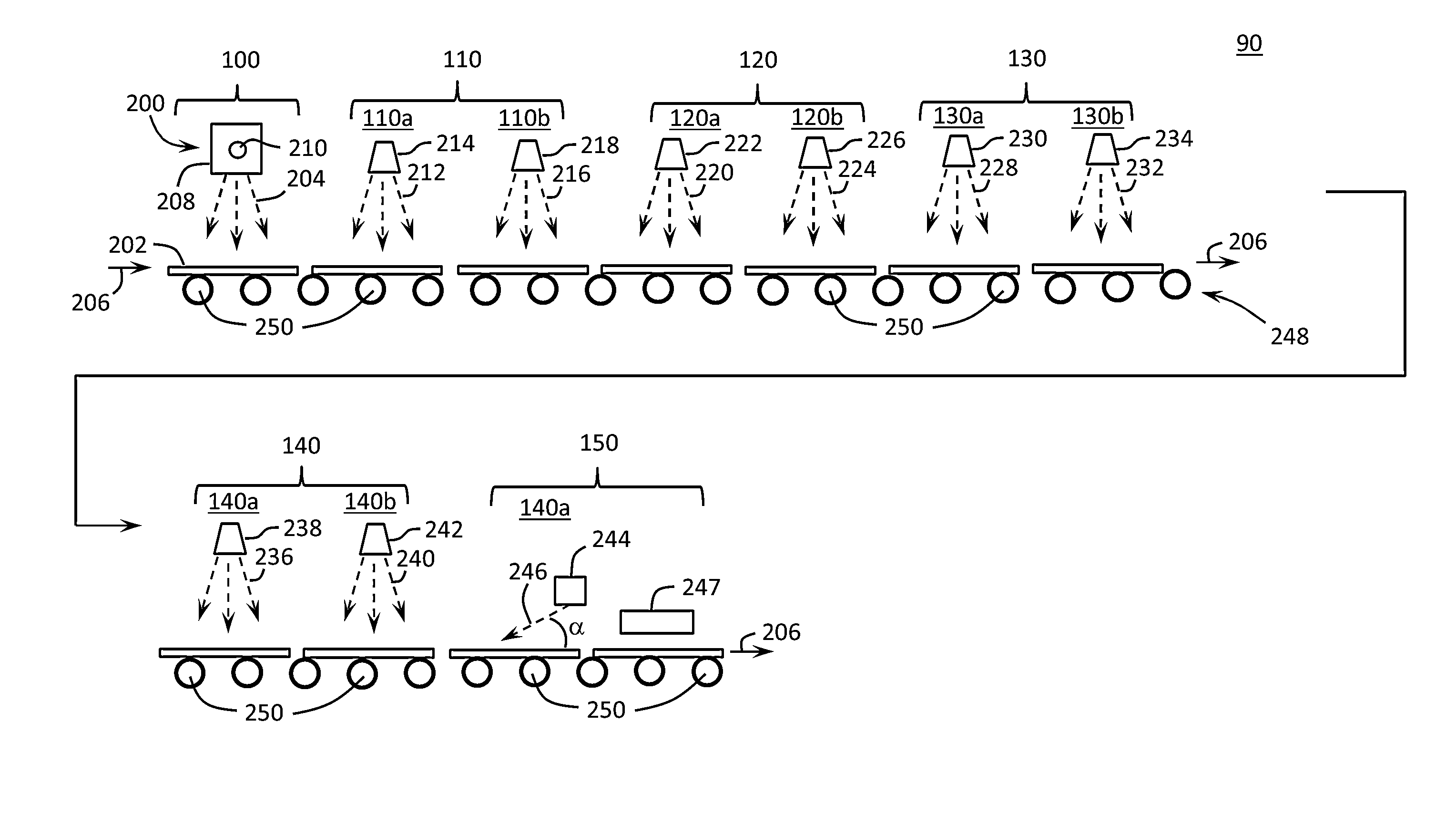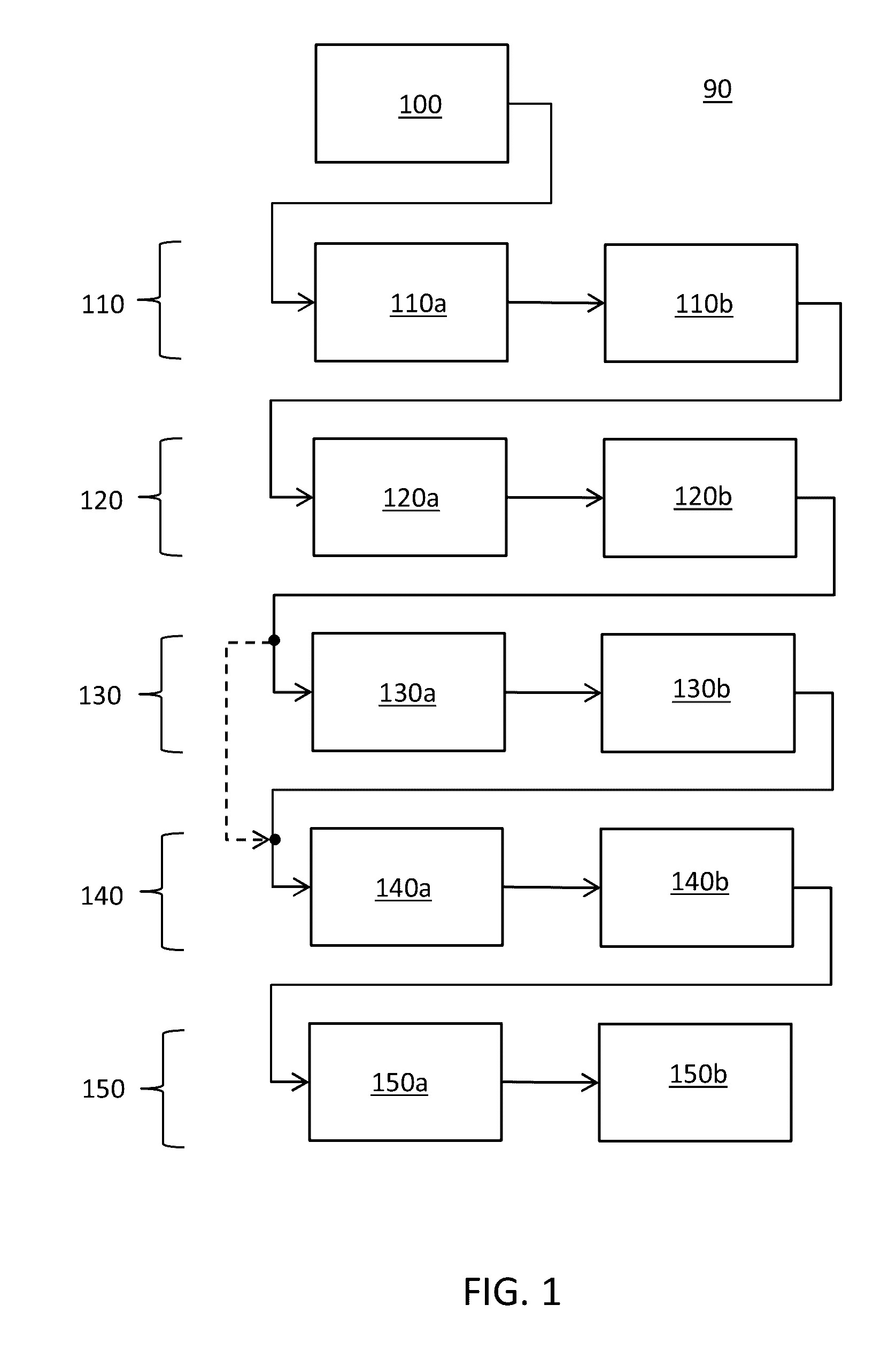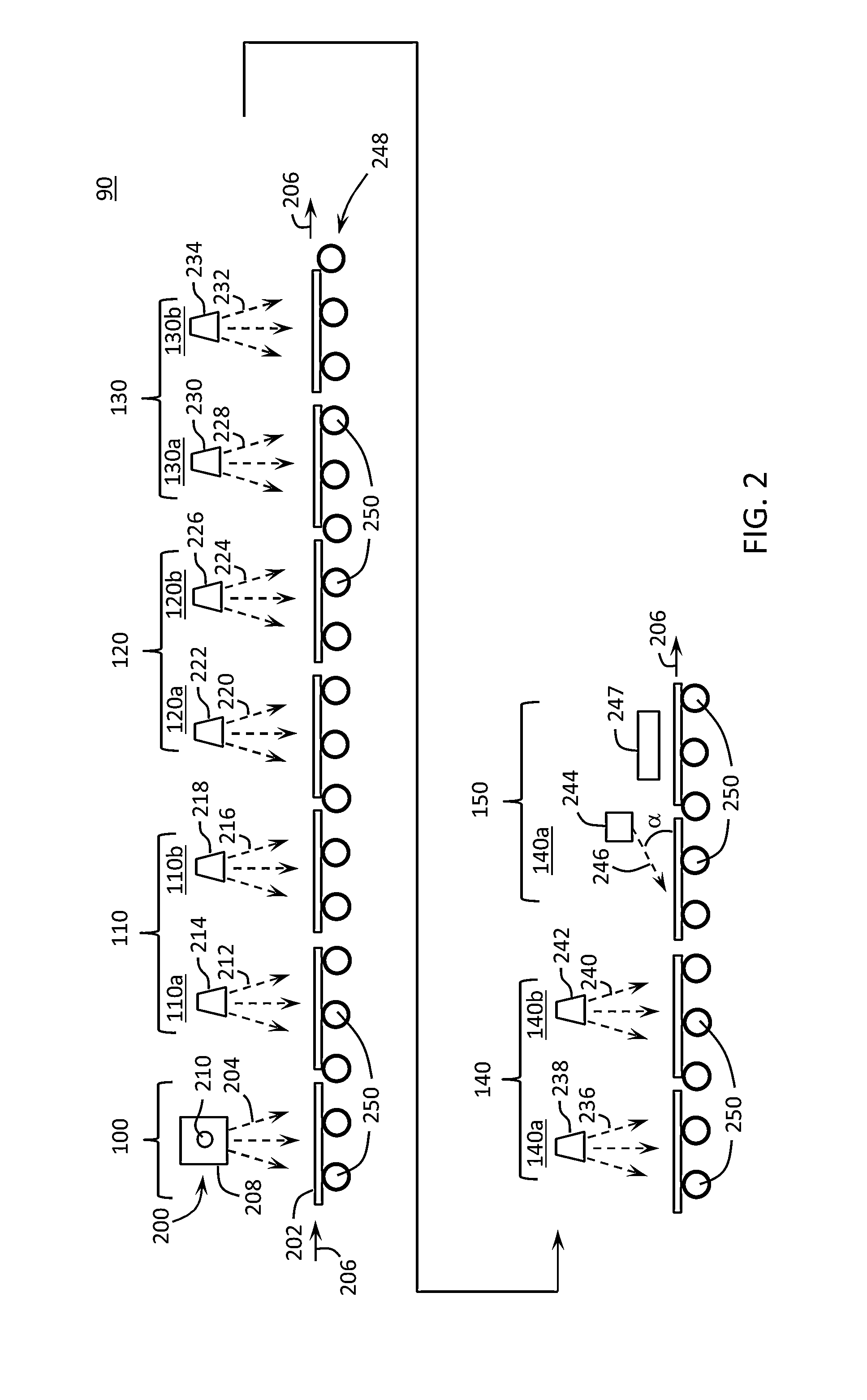Method of cleaning glass substrates
a technology of glass substrate and cleaning method, which is applied in the direction of cleaning flexible articles, cleaning process and apparatus, and cleaning using liquids. it can solve the problems of rgb pixel integrity, no industry standard exists for the display glass industry for submicron particle removal, and existing cleaning process steps are not optimized to remove different defect types (organic, adhered glass or metallic)
- Summary
- Abstract
- Description
- Claims
- Application Information
AI Technical Summary
Benefits of technology
Problems solved by technology
Method used
Image
Examples
Embodiment Construction
[0035]Reference will now be made in detail to exemplary embodiments of the present disclosure, examples of which are illustrated in the accompanying drawings. Wherever possible, the same reference numbers will be used throughout the drawings to refer to the same or like parts.
[0036]An exemplary process for manufacturing a glass substrate, and in particular a thin glass substrate suitable for the manufacture of liquid crystal or other type displays, can involve the following steps: (i) forming a thin ribbon of glass, (ii) cutting the thin ribbon of glass into individual glass substrates (iii) removing areas of non-uniform thickness, e.g. “beads”, that may have developed along the edges of the thin glass ribbon during the forming process, (iv) sizing the glass substrate to required dimensions, (v) peeling of any protective film that may have been attached to the glass substrate, such as for ease in handling, (vi) grinding & polishing edge portions of the glass substrate, such as edge ...
PUM
| Property | Measurement | Unit |
|---|---|---|
| frequency | aaaaa | aaaaa |
| molar concentration | aaaaa | aaaaa |
| surface roughness | aaaaa | aaaaa |
Abstract
Description
Claims
Application Information
 Login to View More
Login to View More - R&D
- Intellectual Property
- Life Sciences
- Materials
- Tech Scout
- Unparalleled Data Quality
- Higher Quality Content
- 60% Fewer Hallucinations
Browse by: Latest US Patents, China's latest patents, Technical Efficacy Thesaurus, Application Domain, Technology Topic, Popular Technical Reports.
© 2025 PatSnap. All rights reserved.Legal|Privacy policy|Modern Slavery Act Transparency Statement|Sitemap|About US| Contact US: help@patsnap.com



